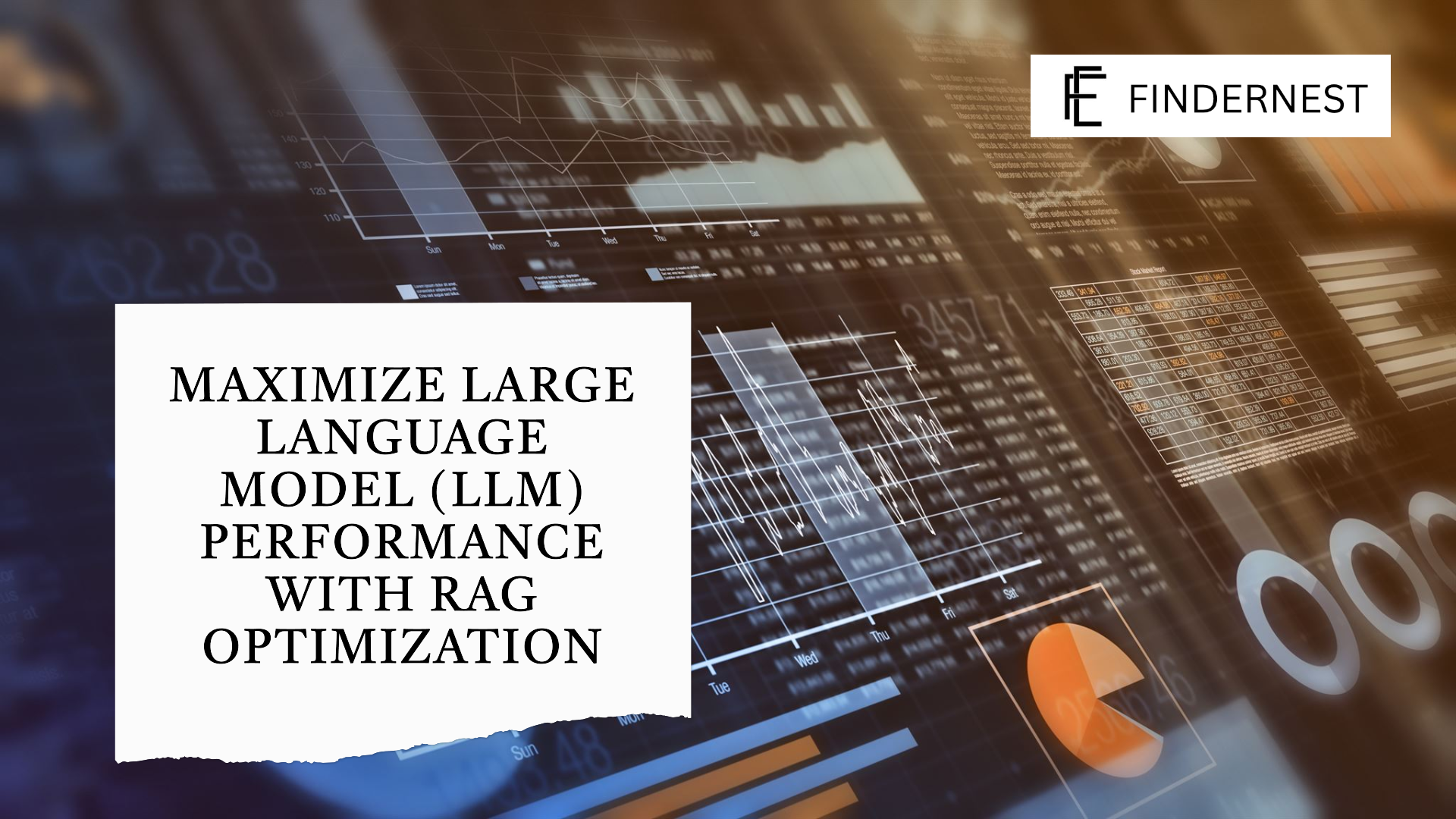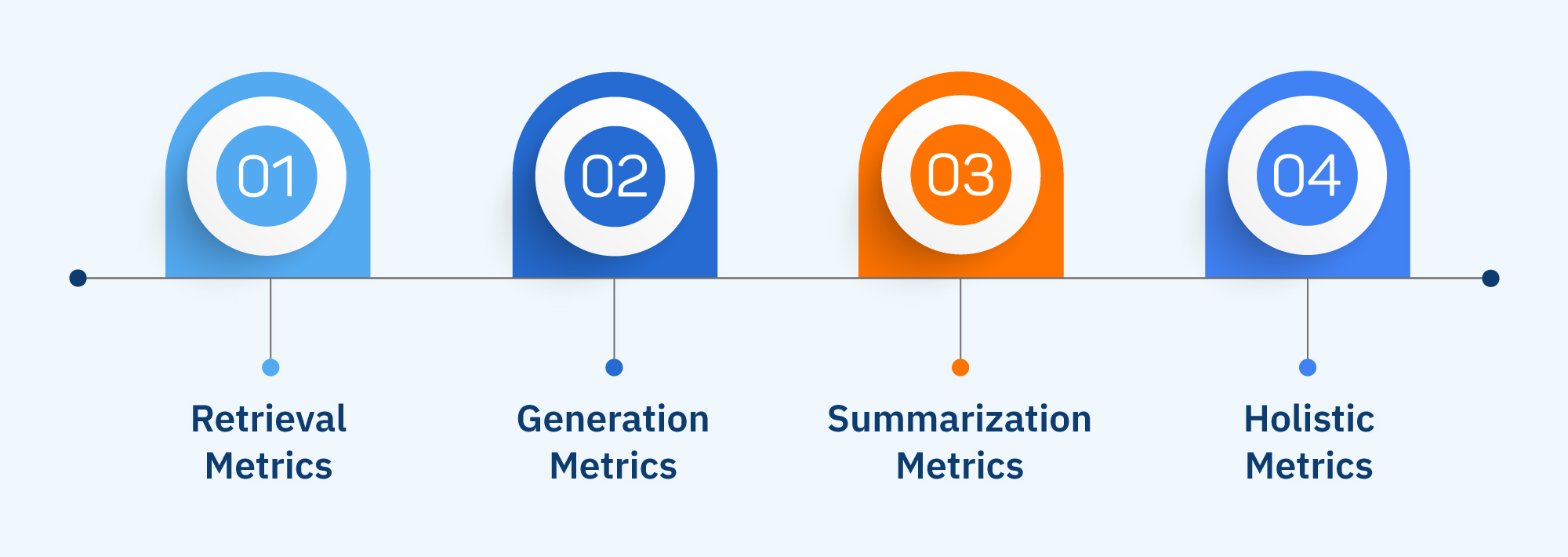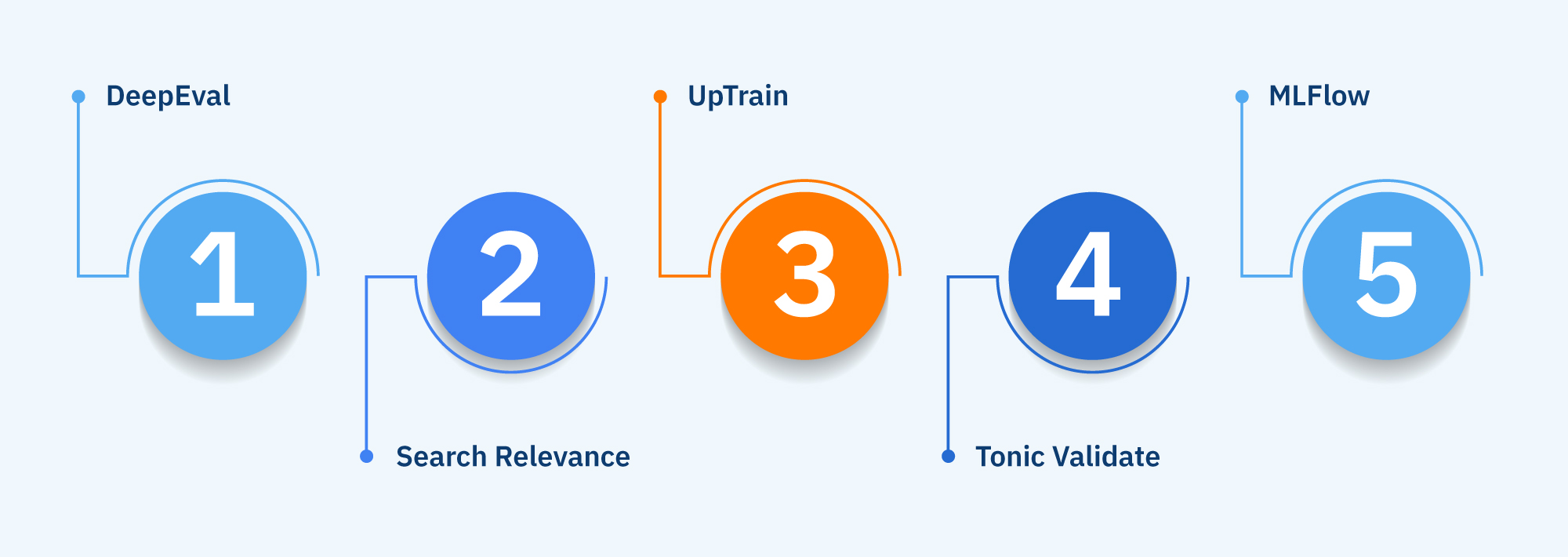Generative AI | AI | LLM | Retrieval Augmented Generation (RAG)
RAG Optimization: Metrics, & Tools for Enhanced LLMs Performance
Read Time 8 mins | Written by: Praveen Gundala

Maximize the potential of Large Language Models with RAG Optimization. Uncover key metrics and tools for enhanced performance. Findernest's RAG (Retrieval-Augmented Generation) Optimization services aim to boost the performance and reliability of large language models (LLMs) by combining retrieval mechanisms with generative features. This strategy enables organizations to efficiently utilize extensive knowledge bases while ensuring that AI systems generate precise and contextually relevant outputs.
Understanding the Basics of RAG
Retrieval Augmented Generation (RAG) is a cutting-edge technology designed to enhance the functionality of Large Language Models (LLMs) by improving their accuracy and reliability through increased context awareness. Unlike traditional LLMs, which often struggle with limited context and hallucinations, RAG uses a framework that leverages factual information from vector databases. By incorporating these databases, RAG can generate more accurate and contextually relevant content. This not only boosts the trustworthiness of the generated output but also provides reference points for data verification, making it an essential tool for optimizing LLM performance.
Large Language Models (LLMs) have transformed the tech industry with their ability to produce text that mimics human language. Despite this breakthrough, LLMs have limitations, such as restricted context, hallucinations, and issues surrounding data privacy and security, which can reduce their effectiveness.
Enter RAG (Retrieval Augmented Generation), a groundbreaking technology crafted to optimize LLMs by enhancing their precision and dependability via context awareness. It relies on factual data from vector databases to deliver accurate information and even provides reference points for data validation. Intriguing, isn't it?
Nevertheless, RAG is not universally effective, particularly when dealing with the nuanced or specific contexts of complex queries. Thus, RAG optimization is crucial. This blog post outlines how to assess and improve RAG's performance and explores specific frameworks for optimization.
Benchmarking RAG: Key Metrics for Performance Evaluation
You must have heard this saying, “If you can’t measure it, you can’t improve it.” This also applies to RAG. Knowing how well your RAG is working is far more complex; thus, evaluating its performance is the first strategic step for improvement.
Here are the following metrics to evaluate its performance:

Retrieval Metrics
In RAG, the response is generated from multiple search results, often through vector search, which leverages LLMs. RAG provides contexts to LLMs, and they generate answers based on that context.
So you’re committed to delivering what users seek. But how can you measure the effectiveness of the system and how well it is retrieving the information from massive datasets? Here’s where retrieval metrics— robust KPIs come into the picture.
Check out the top 5 metrics to keep in your RAG optimization toolbox.
- Precision: Measure what fraction of retrieved results are relevant. High precision signifies the system retrieving the most relevant content.
- Recall: Evaluate what proportion of relevant documents the system retrieved from all the relevant documents present in the datasets. A high recall value indicates that the system is good at finding relevant documents.
- F-score: Combine Precision and Recall into a single score. A good F-score means search results are highly relevant and accurate based on the user search query.
- NDCG (Normalized Discounted Cumulative Gain): Measure the retrieved document’s ranking quality by considering each document’s relevance score and its position in the ranking.
- MRR (Mean Reciprocal Rank): Calculate the average rank of the first relevant document in the retrieval list. For retrieval metrics, you require human expertise to curate a ground truth database (instances of “good” responses) to compare the retrieved results by RAG models.
Generation Metrics
Ever wonder how to assess if the generated answer is correct or not? Here a set of metrics that can help:
- Hallucinations: How factually accurate is the response compared to ground truth? Measures the presence of invented information.
- Entity Recall: How many of the entities mentioned in the ground truth appear in the generated response? Measures completeness, especially useful for summarization.
- Similarity: How similar are the ground truth and generated text? Assessed using metrics like BLEU, ROUGE, and METEOR.
- Generation Objectives: Additional considerations depending on the use case, including safety, conciseness, and bias.
- Knowledge Retention: Evaluates LLM’s ability to remember and recall information from previous interactions, crucial for conversational interfaces.
Summarization Metrics
Summarization is one of the crucial applications of the RAG model. Following are some key metrics you can use for assessing the generated summary:
- Compression ratio: Ratio of original text length to the summary length
- Coverage: Evaluate the percentage of crucial content captured in the summary from the original text.
Holistic Metrics
Holistic metrics provide a broader perspective on RAG performance. These metrics can measure the overall user experience using the system.
- Human evaluation: Assessing the quality of retrieval, generation, and summarization by humans based on relevance, coherence, fluency, and informativeness
- User satisfaction: Evaluate user satisfaction and overall RAG system performance by considering relevance and accuracy, ease of use, number of questions, and return/bounce rate.
- Latency: Measures the speed and efficiency of the RAG model, including how long it takes to retrieve, generate, and summarize responses.
Key Metrics for Benchmarking RAG Performance
Evaluating the performance of RAG systems is crucial for optimization. Key metrics for this purpose include retrieval and generation metrics. Retrieval metrics are essential for assessing how well the system retrieves relevant documents from massive datasets. The top five retrieval metrics are Precision, Recall, F-score, NDCG (Normalized Discounted Cumulative Gain), and MRR (Mean Reciprocal Rank). These metrics provide a comprehensive view of the system's retrieval capabilities.
Generation metrics, on the other hand, focus on the quality of the generated answers. One critical metric here is the assessment of hallucinations—how factually accurate the generated content is. Using these metrics, developers can continually refine their RAG systems to ensure they deliver the most accurate and relevant results.
Top Tools for Effective RAG Optimization
Optimizing RAG involves leveraging various tools and frameworks designed to enhance its performance. Some of the top tools include vector databases like Pinecone and Faiss, which are instrumental in storing and retrieving data efficiently. Additionally, tools like Hugging Face's Transformers library provide pre-trained models that can be fine-tuned for specific use cases.
These tools offer a robust infrastructure for implementing and optimizing RAG systems, enabling developers to achieve higher levels of accuracy and reliability in their applications.
5 Powerful Tools & Frameworks for Your RAG Optimization
Here are some tools and frameworks to help data scientists and developers with RAG optimization by gauging its performance. Let’s have a look.

- DeepEval: This robust tool combines RAGAs and G-Eval with other metrics and features. It also includes a user feedback interface, robust dataset management, and Langchain and Llamaindex integration for versatility.
- RAGAs: Evaluating and quantifying RAG performance is quite challenging; this is where RAGAs kick in. This framework helps assess your RAG pipelines and provides focused metrics for continual learning. Additionally, it offers straightforward deployment, helping to maintain and improve RAG performance with minimal complexity.
- UpTrain: An open-source platform that helps gauge and enhance your LLM applications provides scores for 20+ pre-configured evals (and has 40+ operators to help create custom ones). It also conducts root cause analysis on failure cases and presents in-depth insights.
- Tonic Validate: This is another open-source tool that offers various metrics and an uncluttered user interface, making it easy to navigate for users.
- MLFlow: MLFlow is a multifaceted MLOps platform that offers RAG evaluation as a single feature. It mainly leverages LLMS for RAG evaluation and is well-suited for broader machine-learning workflows.
In addition to these, other frameworks and tools are also available, monitoring real-time workloads in production and providing quality checks within the CI/CD pipeline.
Challenges in RAG Optimization and How to Overcome Them
Despite its advantages, RAG is not without challenges. One significant issue is capturing the nuanced or specific contexts of complex queries. This limitation can hinder the system's ability to generate highly accurate responses.
To overcome these challenges, it is essential to continually refine the retrieval and generation algorithms. Incorporating human expertise to curate ground truth databases and implementing iterative testing and validation can significantly improve the system's performance.
Future Trends in RAG Technology
The future of RAG technology looks promising, with ongoing advancements aimed at further enhancing its capabilities. One emerging trend is the integration of more sophisticated machine learning algorithms to improve context awareness and accuracy.
Additionally, the development of more advanced vector databases and retrieval systems will likely play a crucial role in the future of RAG technology, enabling even more precise and reliable information generation.
Reasons to Select Findernest for Optimizing RAG Services
RAG optimization is essential for delivering accurate and relevant information. However, implementing various metrics and frameworks for this seems like an uphill battle. But no worries, we’ve got you covered!
Findernest's RAG (Retrieval-Augmented Generation) Optimization services focus on enhancing the performance and reliability of large language models (LLMs) by integrating retrieval mechanisms with generative capabilities. This approach allows organizations to leverage extensive knowledge bases effectively while ensuring that AI systems produce accurate and contextually relevant outputs. Here’s an overview of the key features and benefits of Findernest's RAG Optimization services:
1. Improved Retrieval Mechanisms
- Contextual Relevance: Findernest optimizes retrieval processes to ensure that only the most relevant documents are accessed by the LLM, minimizing distractions from irrelevant information. This is crucial for maintaining the quality of generated responses.
- Dynamic Document Chunking: The service includes advanced techniques for breaking down large documents into manageable chunks, facilitating more efficient retrieval and processing by AI models.
2. Enhanced Model Performance
- Fine-Tuning Capabilities: Findernest offers fine-tuning services for various components of the RAG system, including embedding models and data enrichment processes. This optimization helps improve the overall performance and accuracy of LLMs.
- Customized Solutions: The optimization strategies are tailored to specific business needs, ensuring that the AI systems are aligned with organizational goals and use cases.
3. Efficient Knowledge Management
- Data Enrichment: Findernest enhances the knowledge base used by LLMs through data enrichment techniques, ensuring that the AI has access to high-quality, relevant information when generating responses.
- Filtering Mechanisms: The implementation of filtering mechanisms allows the system to focus on pertinent documents, streamlining the retrieval process and improving response times.
4. Scalability and Flexibility
- Adaptable Framework: Findernest’s RAG Optimization services are designed to scale with organizational growth. As businesses expand their knowledge bases or change their operational focus, the optimization strategies can be adjusted accordingly.
- Integration with Existing Systems: The services can be integrated seamlessly with existing AI infrastructures, enhancing their capabilities without requiring a complete overhaul.
5. Comprehensive Support and Consultation
- Expert Guidance: Findernest provides ongoing support and consultation to help organizations navigate the complexities of implementing RAG systems effectively. Their team of experts offers insights on best practices and optimization strategies.
- Performance Monitoring: Continuous monitoring of system performance ensures that any issues are identified and addressed promptly, maintaining optimal functionality.
6. Cost-Effectiveness
- Resource Optimization: By improving retrieval efficiency and model performance, Findernest helps organizations reduce operational costs associated with running LLMs while maximizing their return on investment in AI technologies.
In summary, Findernest's RAG Optimization services empower organizations to enhance their AI capabilities by improving retrieval mechanisms, fine-tuning model performance, managing knowledge effectively, providing scalable solutions, offering expert support, and ensuring cost-effectiveness. These services are essential for businesses looking to leverage AI technologies for improved decision-making and operational efficiency.
Learn how FindErnest is making a difference in the world of business
Praveen Gundala
Praveen Gundala, Founder and Chief Executive Officer of FindErnest, provides value-added information technology and innovative digital solutions that enhance client business performance, accelerate time-to-market, increase productivity, and improve customer service. FindErnest offers end-to-end solutions tailored to clients' specific needs. Our persuasive tone emphasizes our dedication to producing outstanding outcomes and our capacity to use talent and technology to propel business success. I have a strong interest in using cutting-edge technology and creative solutions to fulfill the constantly changing needs of businesses. In order to keep up with the latest developments, I am always looking for ways to improve my knowledge and abilities. Fast-paced work environments are my favorite because they allow me to use my drive and entrepreneurial spirit to produce amazing results. My outstanding leadership and communication abilities enable me to inspire and encourage my team and create a successful culture.

